
Communication to Postal service to Stamps & Stationery
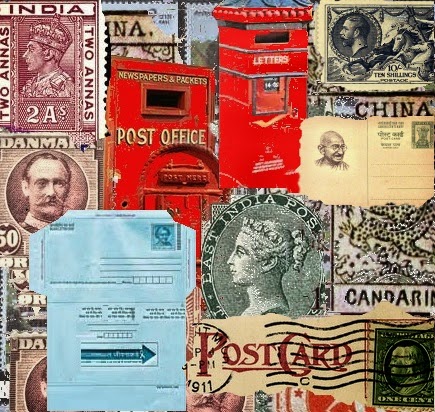
1) At the outset let us understand how the oral and other means of communication led to the birth of the Postal system, which in the next few decades led to the issue of Postal stamps and Postal stationery and made them an inseparable part of the Postal system. Every nation have their own Postal Stamps and Stationery as part of the Postal system.
2) In one sense the Postal system is a branch of communication, and sending communication in the form of printed document after stamping i.e. affixing a seal is meant to regulate or authorize the message thus sent. Communication is not transmission of oral messages alone but also oral submissions send in readable format, in a regulated manner,meant for some or many for several reasons.
3) Though the Postal stamps and stationery were originally introduced for authenticating and regulating the process of messaging from one part to the other, the purpose was also to generate some kind of revenue albeit fee to the carrier agency (Govt) for services rendered i.e carrying the messages sent through them.
4) India is in the threshold of communication revolution and the Postal system being one amongst the communication systems, over decades India established the highest number of Post offices which today is spread in nooks and corners of every Village and towns, the outlets to sell not only the Postal stamps and stationery but also rendering services like banking too. The sale of stamps are higher in India as recorded communication in all spheres of life is extensively put to use. During the last few years the use of Stamps have gone down due to the franking process which is also a kind of Stamping for all purposes.
5) The scope and application of Postal stamps and Postal Stationery did not rest with the regulation of messages alone, they play an important role in authenticating several of the documents that have oral version documented for legal sanctity, say something like affidavits of many types for legal and other purposes which is done on a stamped paper. Of late due to high rate of counterfeiting of stamp paper various valued Stamp papers have been withdrawn and instead Franking the stamp value on the bond paper on which the documents are recorded have been introduced.
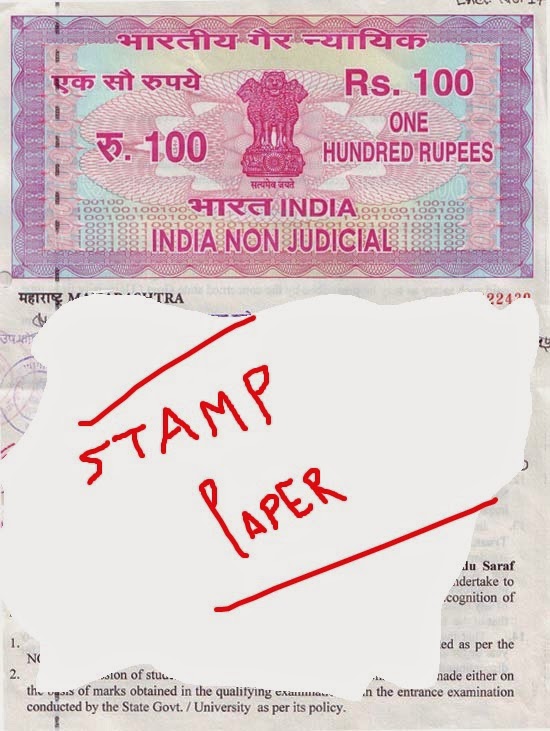
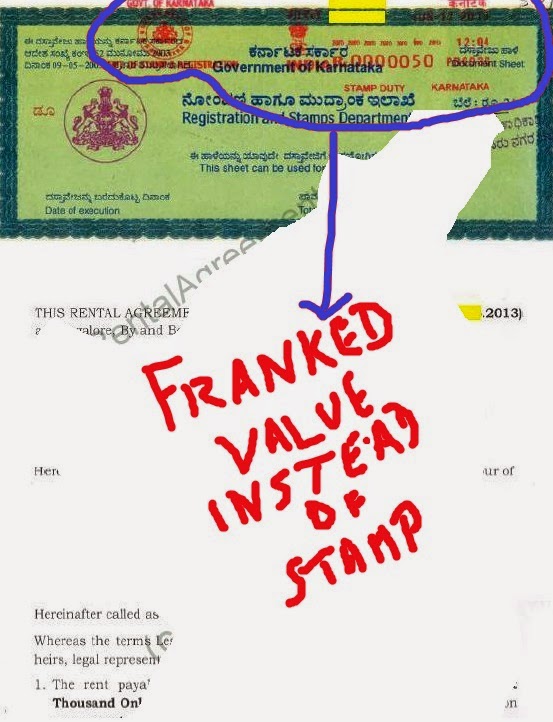
6) The history of India’s Postal system began long before the dawn of printed Postage stamps and stationery. The evolution and systemic growth of Postal communication in India can be traced over a span of centuries when a different kind of communication system albeit ghost Postal system in the form of messengers carrying the messages existed even during the regime of Mogul emperors and prior to their rule though many of the areas in India were inaccessible by land then.
7) It is not surprising to note that in a vast land filled country like India, for centuries, some format of organized communication system was practiced. The probable intent of such communication was to ensure that the communication both oral and in written format is not only exchanged between the individuals but also gets transmitted from one generation to the other (see next para), right from the primitive age to the modern age. Though they cannot be construed as Postal system, yet the fact that only such acts developed into Postal system in later years cannot be ignored.
8) Several of the primitive drawings and heliographic characters found in the caves, culverts, ancient temple floors and pillars, or found on the stone tablets, leaves and several of the relics that have been found during archaeological discoveries suggest that though not directly related to Postal system which enables the messages reach from one end to the other in a matter of few days, they were meant for passing on the messages of events to those who otherwise would have remained unknown to such events, whether in few years or few decades later. The basic principle of the act of inscription was to pass on the message of events in some form to the subsequent generations. Indeed only such inscriptions have laid the stone for the emergence of the Postal system i.e. to carry forward the recorded messages from one to many. The difference between the two are, in the case of the former (Inscriptions) the act was meant for passing on the messages to generation to generations while the latter (Postal system) is an act of exchange of messages between few or more surviving members.
9) Many Hindu scriptures carry references to messengers carrying the messages called carriers. The Rig Veda cites the use of dogs called ‘Sarama’ that carried the messages, even as the ‘Atharva Veda’ records the use of couriers going by the name ‘Palagala. The messages were tied on to the animal necks in scrolls or hand carried by the humans. In the Nala-Damayanthi love episode a Swan was used for passing on the message. During Ramayana and Mahabharata era traditional emissaries conveyed the messages in an unconventional manner.

10) If one carefully read the history one would see that even in primitive era, the messages were transmitted by many ways like bush fire, drum beats and crude sounds from one group to the other in a manner understandable to the locals when the idea of Postal system were not even remotely thought of. Later years as need of people became more and more demanding, various methods of communication were manifested in several ways, and each one designed in their own way to meet the challenge of the modern times. The regularized Postal systems which manifested from them were much later discoveries.
11) The period of rule under several Kings and Emperors saw the messages being conveyed from one part to the other using homing birds especially pigeons as messengers. The scrolls containing the messages used to be tied to the legs of the birds that were sent. However such birds were not deployed for carrying regular mail of public and were meant to be messengers for Emperors and rulers.
12) Several centuries ago the Persian Emperors aided by Cyrus the great, evolved perfect communication system for Military and Political needs. Chanakya’s Arthashasthra mentions that even during 3rd century BC some messaging system was in vague for collecting and exchanging information.

13) Several inscriptions found on stones, pillars, scriptures etc though buried and remained static in places for centuries and the oral form of messaging practiced over past centuries, both must have prompted the rulers to think of transmitting the messages in written format and be sent by a reliable medium for military adventurism or administrative purposes or for other reasons. The traditional messenger system practiced during Mahabharata and Ramayana helped the Mogul and Portuguese to evolve effective and sharper communication system.
14) The oral mode of messaging led to the establishment of relay of runners who carried the message scrolls (similar to written letters) tied on a pole and moved both on foot and by traveling on the back of horses or Camel or other animals. The services of the relay runners were extensively put to action mostly during war time to pass on the messages quickly. Such mode of communication exchanged from one end to the other commenced in a organized manner especially during Maurya and Emperor Asoka regime. At the same time the services of mail carriers were also extended to cater to the needs of public, mainly the traders to some extent.

15) In 712 AD, the Arab influence came into Asia with the conquest of Sind. The areas under their regime were called Caliphate meaning political religious state. The state was led by a supreme religious and political leader known as a Caliph and the invading Mogul rulers in Sind (province) felt that it was essential to keep the communication remain undisturbed with the Chief of Caliph then residing in Baghdad in Iraq in order to get their advice or orders. How was it effected ?
16) Many chronicles pertaining to Caliphates mention the existence of relay of horse messengers. Relay of horse messenger means the written messages tied on the horses will not be carried by a single horse from one end to the other and instead at every prescribed points the outgoing message will be passed on to the next waiting horse messenger and the original horse messenger will come back carrying the incoming messages. Such a kind of messaging akin to Postal system was called ‘Barid’ messenger system meaning message sent through animals and was practiced extensively during Mogul rule in 7th and 8th centuries.
17) The messages thus carried were of two types (a) Secret messages meant for military purposes and information from spies on the ground situation of the vast territories held by the Emperors or Kings. The other one was (b) non essential messages meant for trade, revenue records and other purposes.
18) Mohammed Ghazni established well organized human carried communication system. It is reported that during his regime well established Barid Postal agencies were maintained in all the provinces under his rule.
19) Till 1200 to 1500 the human messengers regularly carried the messages. During Qutb-ud-din Aybak regime, a messenger cum animal Post system was established in India which was the combination of a horse and foot runner for the Postal service.
20) For all practical purposes, in order to clarify the system of exchanging the messages which were in vague during the earlier era, the historians while recording the events might have referred the services as Post or Postal System. However during the period of Mogul and Persian rule, the nomenclature of Post or Postal Service did not exist. The term Post Office and Postal system came up only in the year 1660 in England when an office was created for receiving the written messages meant to be delivered elsewhere.
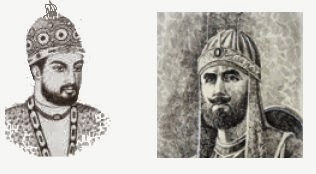
21) Aladdin Khilji who ruled Northern India from 1296 to 1316, and Sher Shah Suri who ruled from 1541 to 1545 replaced the human runners with horse runners for speedy conveyance of messages.

22) Qutub ud-din Aibak who ruled during 1206–1210 kept Dak Chowkis for the Postal system. During the regime of Genghis Khan a messenger was stationed at every 25 miles for performing the duties of Postal system.
23) In the 13th century the Dak Chowkis system was in place from Delhi to Warangal in Andhra Pradesh in south India. The successive Mogul Emperors and Kings continued to operate the Dak Chowkis Postal system in one way or the other however slightly modifying the mode of communication as suited in their time.
24) As mentioned earlier, the conveyance of messaging system as adapted during the regime of Sher Shah Suri was the best ever known messaging system existed for the administrative purposes during Mogul period and was extended to the traders as well. The then message runner system was recast with two horse couriers being stationed at every two mile distance for speedy conveyance of messages both official and trade related ones.

25) In short the fact cannot be denied that only during Mogul rule that a stable form of communication system was put to practice in the form of a runner, messenger and horse courier and sometimes camel couriers in the entire Indian Territory.
26) When the communication need continued to grew, it was felt that for better transmission of the messages which thence were carried by human and animal couriers, well laid routes were necessary for the travel. The Arab and Persian chronicles has recorded that the principal routes connecting Asia and far east were well laid for easy and faster travel by the moving nomadic tribes and invaders and that indirectly helped the communication messengers who could move faster from one area to the other without difficulties. During Han Chinese, Romans, Kushans, Mauryan and Greek regimes safe route for traders to travel were made available for speedy Postal service.
27) Much before the advent of such developments in Postal services during Mogul period, Denmark had already established its own Postal services in the year 1624. The mails sent to different parts of their country were hand carried by a fleet of foot soldiers recruited and when the volume and area of operation got increased in the next few years, besides the foot soldiers, horse riders were employed. In order to regularize such service, Denmark released the first set of printed Postal stamps only in the year 1850 or so.

the year 1907
28) The next known country that established Postal service called ‘Posten AB’ was Sweden. Postal services known as ‘The Royal Postal Agency’ came into operation in the year 1636. They had practiced a unique stamping system using Wax and bird’s Feather. However the country’s first series of printed stamps were released only in the year 1855.
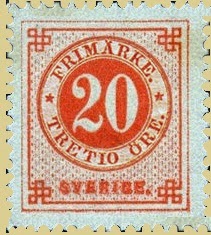
the year 1879
29) In the year 1653 a Frenchman reportedly established a Postal system in France by setting up post boxes, and any messages on envelopes sold by him if deposited in the said post box would be safely delivered to the addressee. This is perhaps the only known history available on the introduction of the first ever organized Postal service using Post Box. However the said system was in the hand of an individual limited to certain areas for passing on the messages.
30) In South of India, in the year 1672, Raja Chuk Deo of Mysore began an efficient Postal service which was further improved by Haider Ali. While various modes of communication were in operation till the mid of 18th century, those practices were well taken note by the invading foreign rulers viz Portuguese, Dutch, French, Danish and British to evolve a well organized system in the form of establishment of official Postal system coupled with the issue of Stamping for efficient military and governmental communications. When British invaded India they established organized communication system for both official and commercial purposes. However historians agree unanimously that Persians were the first to adopt a Postal system in their own country beyond Asia.
31) Between 1688 and 1793 the East India Company opened several post offices in Bombay, Calcutta and Madras (erstwhile states of India under the names mentioned above, while private Postal service was also established by traders as the maritime trade and Silk trade from Persia flourished high in Indian continent. Early records of ancient Greek records of the then Deccan India suggest that the maritime trade was on an all time high and exchange of communication between traders were part of maritime activity.
32) Since such dual Postal system caused several practical difficulties and misuse, the British enacted a law titled ‘The Post Office Act XVII of 1837’ to ensure that the entire Postal system came under the direct control of the Govt in India.
33) The Post Office Act XVII of 1837 provided that the Governor-General of India in Council had the exclusive right of Postal services hired within the territories held by East India Company. Thus the situation warranted regulation acts. It became necessary to authenticate the mails sent, lest there would be again misuse and chaos in the Postal communication system.
34) Although the Indian Post Office was established in the year 1837, Asia’s first adhesive stamp named the ‘Scinde Dawk, was introduced in 1852 by Sir Bartle Frere, the British East India Company’s administrator for the province of Sind, however with a small amount of advance fee to be paid for the stamping or sealing as was called then. It was stated that the stamp or seal was meant to authenticate the Postal communications sent through Govt agencies.

35) The first set of Postal stamps with a value of four Anna were released in the year 1854 in India without perforation or adhesive at the back of the stamps unlike the present day stamps.
36) During Mogul regime several provinces were ruled by the Princes. Those provinces were known as Princely states. Some of the Princely states too had their own mode of Postal service which required affixing printed Stamps on the envelopes sent. The Imperial Posts of British rulers too co existed with the princely state Postal systems some of which produced stamps for use within their respective dominions. However the British Indian postage stamps were required to be affixed for sending mails beyond the boundaries of those states.
37) At the time when British ruled India, 652 States were under the rule of some prince or the other and while most of them did not issue postage stamps, some princely states issued their own stamps for affixing on the letters and envelopes handled by Postal service within their territories.
38) Though some of the princely states issued their own printed stamps for the postal service rendered within their territories, the adhesive stamps of British India were overprinted with word ‘for use within each princely State’.
39) The Indian Postal system under British developed into an extensive, dependable and robust network providing connectivity to almost all parts of India. Based on the model Postal system introduced in England by reformer Rowland Hill, efficient Postal services were provided at a low cost in the places ruled by British.
40) Though some form of Postal service reportedly existed prior to 1630 elsewhere in the world several countries had already established their own net work of Postal services and issued printed Stamps and Stationery for use during 16-18th century. The first public Postal services in India began only in the year 1870 and first series of printed Postal Stamps were released in the year 1871. Similarly the British rulers issued first set of printed Stamps of England only in the year 1840 after reformer Rowland Hill introduced postal reforms in England. However the stamps issued by British rulers in 1840 did not have perforation for easy tearing of stamps from the sheet.
41) The United States of America issued their first series of printed Stamps in the year 1847 even though the independent Postal service from Boston to Newyork existed from the year 1639 when America was under British rule.
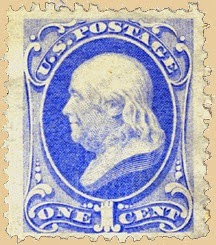
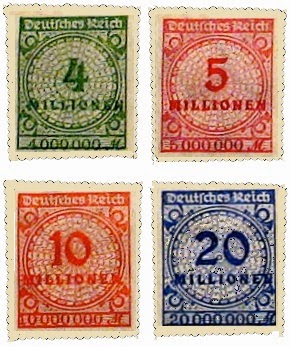
44) When France took control of northern Vietnam following its victory over China in the Sino-French War fought during 1884–85, French Indochina was formed with areas like Annam, Tonkin, Cochin china etc. Under French rule Postal services were established in those areas which needed affixing of Stamps on envelopes. The same postage stamps as used in the French held colonies elsewhere were used in Indochina.
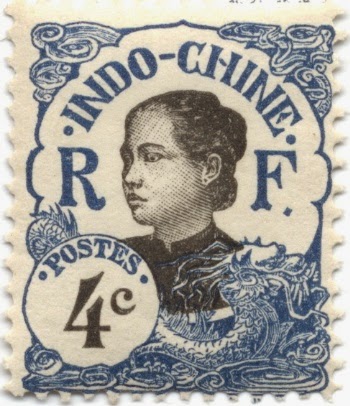
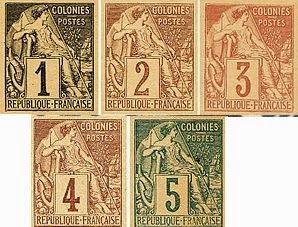
Indochina and
45) The Chinese version of regular government Postal service existed during the regime of Zhou Dynasty in c. 1046–256 BC. According to Marco Polo who was an Italian merchant traveler, and who was the first European to land in China, there were 10,000 post stages during 12th century for delivering mails when China was under Mongolian rule. But the use of Postal Stamps did not exist at that period. However regular Postal services came into operation only in 1878 with the release of printed stamps in the year 1882.
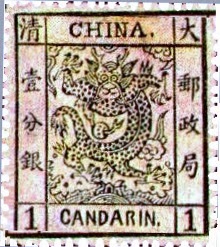
46) How are the Postal Stamps and Stationery printed? Why were the stamps necessary when the mails were carried by messengers and sent by wagons drawn by animals? These were the basic questions that were raised for many years by different people.
47) Besides Military communication exchange of information between traders prompted the rulers to think of collecting some fee for the service rendered in the name of messenger tax to meet the expenditure incurred for the messengers who carried the messages. The act of collecting fee began initially by affixing a seal with wax over the bag that contained the message scrolls or letters. Since that was leading to misuse and unaccountability, a piece of paper was pasted on the bag indicating the no of messages and the place where it was sent.
48) Before the advent of adhesive Postal stamps, the letters were hand stamped (Ink Impression with fingers or hand print) or marked with ink. They were called Bishop Marks as such a system was adapted based on the practice of a Bishop who arranged for the exchange of messages. That led to the invention of franking technique. Slowly the thought of using some print format for accounting the letters brought in the process of printing Postal stamps.
49) Prepayment postage began in 1852 in the Scinde/Sindh district with the use of the Dawk adhesive stamps. Since the introduction of Postal system made it possible for any person to send a letter, packet, or parcel to any addressee either in the same country or abroad in the expectation that it will be delivered with regularity, speed, and security, the idea for the service be paid in advance by the sender cropped up. That led to the introduction of prepayment system which led to the printing and issue of Postal stamps.
50) The initially introduced Postal stamps or seal as they were called did not contain any security feature, and instead they were printed on special paper which was not available to others and counter stamped with the rubber seal of the Govt administrator to ensure that there was no misuse. In one sense the Postage stamps were similar to the labels attached with the goods. Therefore they needed to be collected in advance by paying fixed fee and to be tagged with the letter sent from the point of letter collecting centre. This was subsequently transformed into production of stamps with adhesive for pasting on the envelopes.
51) Today the Stamp printing process utilizes the finest technology available in the print world. Since the stamps have monetary value and treated as fee for a specific cause (Postal Service), the printing of Postal Stamps and Stationery are also treated as Security printing and only governmental organizations are permitted to print them in India. The printing of stamps at India Security Press, Nasik Road in Maharashtra began in the year 1925. The first stamps produced were the definitive series of George V.
52) In the initial stages when the stamps were printed, engraving process was deployed for the printing as everyone cannot cost effectively engrave the designs required (as anti counterfeit measure). To my knowledge Letterpress printing process have not been deployed for the printing of Stamps though they were used for printing Postal cards and envelopes, reason being most of the security features cannot be printed by this process of printing. Though the engraving process of printing was deployed for printing stamps, slowly the gravure process of printing was also adapted for printing of multi coloured stamps. For a very long period Gravure process of printing remained the most sought after print process for printing Stamps and Postal Stationery.
53) No international standard either for size or shape are prescribed for the printing of Stamps. Some of the stamps are seen printed on water marked paper, azure laid or on rib lined paper. Each country had their own standard in printing and release of the Stamps. Stamps were printed on paper designed and manufactured specifically for them, and were printed either in sheet or rolls form. But in order to separate each stamp in the sheets or rolls, perforations were introduced in between each stamp in all sides. Also the Stamps were coated with special adhesive on their back so that they can be slightly moistened and pasted on the envelopes. The Stamps were either in rectangular shape, square, triangular or pentagonal in shape.
54) During British rule in order to streamline the Postal service in India a Commission of Inquiry was appointed which studied the Postal services of some of the European countries where the system worked in a organized manner and came out with certain suggestions. The earlier practice of delivering official letters free of postage was abolished and the new system suggested by the commission was put to practice by the East India Company which ruled India then.
55) The first sets of Postal Stamps in values of 1/2 Anna, one Anna, Two Anna, and Four Anna in low and uniform rates were introduced in the year 1854. The said sets of Stamps did not contain perforation or adhesive on their backs. It is also stated that the world’s first bi coloured Stamp was printed in India in the value of Four Anna. The designs were incorporated with captions that read ‘East India Postage.
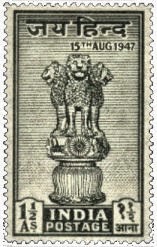
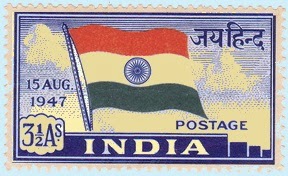
56) Commemorative stamps are issued by different countries to commemorate important events, in praise of prominent personalities in various fields, depicting different aspects of nature, commemorating agricultural activities, national/international issues, games etc.
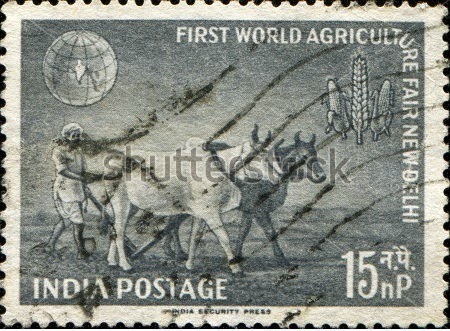
57) Other than on paper base, special postage stamps are also made of materials such as Silver or Gold foils and released for certain important events. Switzerland made a stamp that contained a bit of lace and one of wood. The United States produced stamps on plastic. East Germany issued a stamp of synthetic chemicals. South Africa issued 3D effect stamps. In the Netherlands a stamp was made of silver foil.








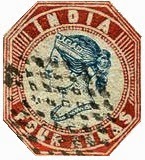
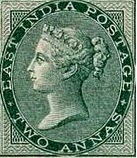






Recent Comments